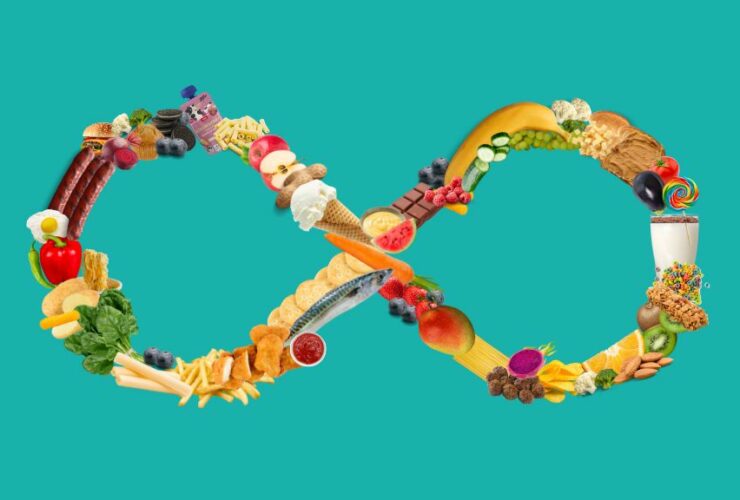Communicating the Eating Spectrum: From optimized eating to eating disorders
As dietitians and nutritionists working in an age where diet culture is prolific across social media and the wellness industry, it is crucial for us to understand the nuanced spectrum of eating behaviors, from optimized nutrition to disordered eating and clinical eating disorders. With this in mind, we must consider how we effectively communicate this spectrum to the general population to raise awareness and provoke curiosity without unnecessary fear and anxiety. Let’s explore how we can navigate this delicate balance.
Optimized Nutrition: A Foundation for Well-being
Optimized nutrition is the cornerstone of a healthy relationship with food. It involves a safe, supported, purposeful, and individualized approach that promotes a positive body image and healthy thoughts about food. People with an optimized relationship with food are adaptable to the specific and changing demands of their lifestyle or, in the case of athletes, their sport.
Individuals may naturally move along this spectrum multiple times during their lifetime, and it’s important to emphasize that optimizing a person’s relationship with food is not a static state but a dynamic process influenced by several factors (some based on predisposition but many environmental factors).
Disordered Eating and Eating Disorder: Recognizing Red Flags
Disordered eating (DE) may manifest as short-term restrictive diets, which are often rewarded and normalized in society (either inadvertently or blatantly). These behaviors can progress to chronic energy or nutrient restriction, binge eating, dehydration, and the use of harmful substances like laxatives or diet pills. It’s vital for people to learn how to notice these red flags and how/when to seek appropriate support.
Importantly, individuals can move back and forth along the spectrum at any point in their lives, and there are potential health implications regardless of their current position on the spectrum.
When communicating about the eating spectrum, it’s crucial to:
- Emphasize the Continuum: Highlight the fluid nature of the spectrum, reinforcing that individuals may move along it at different points in their lives
- Normalize Seeking Help: Encourage open conversations about nutrition and well-being, emphasizing that seeking help is a sign of strength, not weakness
- Avoid over-generalising: Recognize the uniqueness of each person’s journey and tailor interventions/messaging accordingly
- Avoid Fear Mongering: Provide information in a supportive and educational manner, focusing on promoting positive behaviors, identifying red flags and patterns rather than instilling fear, shame or guilt (which may already be very common in disordered eating).
As Nutritionists and Dietitians, our role is not only to provide nutritional guidance but also to be empathetic and clear educators who empower individuals to foster a healthy relationship with food. By navigating the disordered eating spectrum with sensitivity and confidence, we can contribute to a society that embraces overall well-being without unnecessary fear or anxiety.
🌟 Light the way on the Path to Understanding: Join Compeat Academy to gain exclusive access to our course on “Introduction to Disordered Eating & Eating Disorders in the General Population”! 🌟
Dive into the prevalence, classifications, risks, and protective factors surrounding disordered eating and eating disorders. Build confidence in navigating sensitive conversations and master early identification strategies using screening tools. Crafted by experts, this course empowers you to make a difference. Embrace a flexible learning journey, join our supportive community, and ignite change today!



